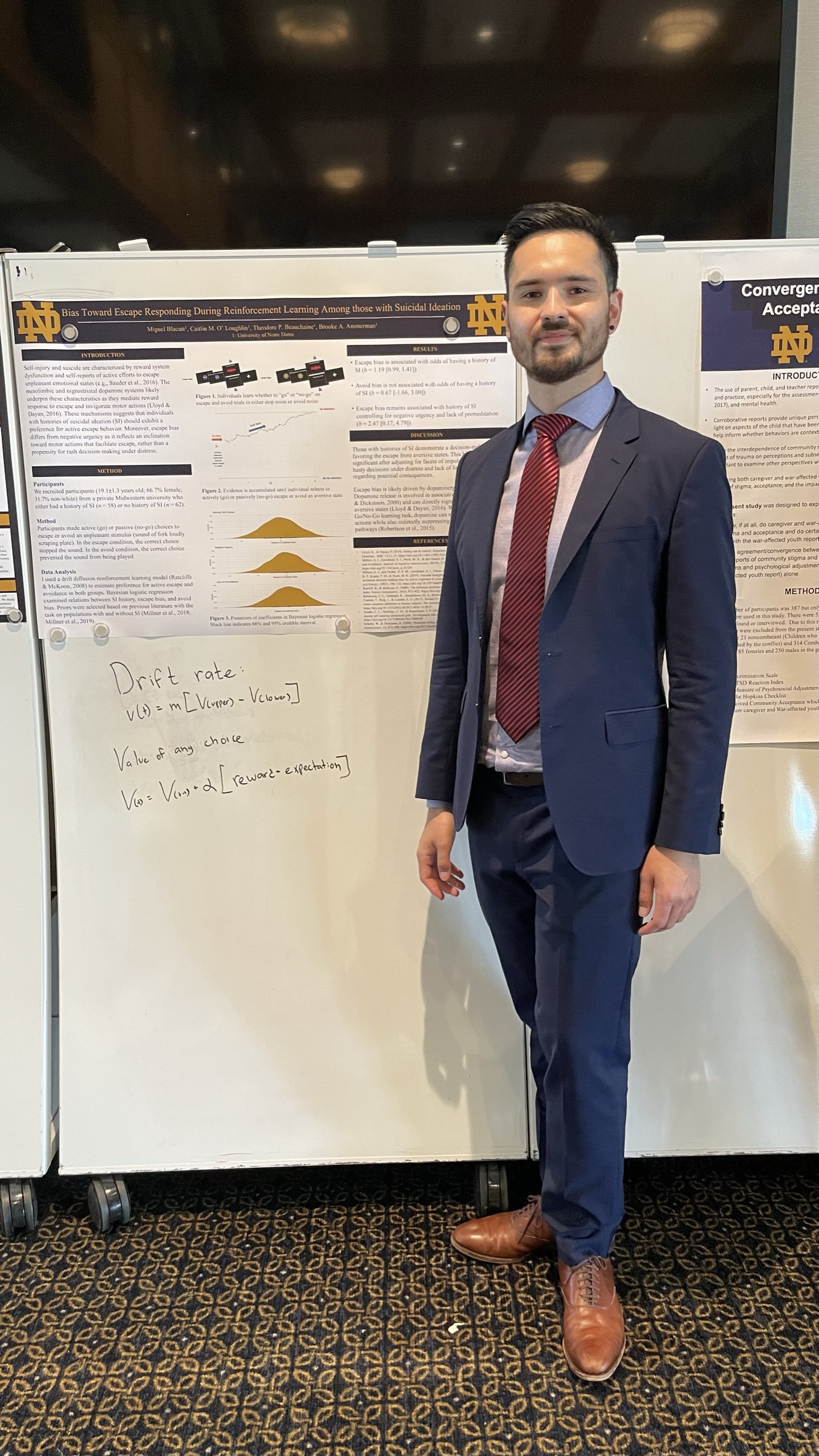Suicide and Self-Injury
(PS11-46) Exploring the Bidirectional Relationship Between Daily Suicidal Ideation and Alcohol Use

Miguel Blacutt, Other
Doctoral Student
University of Notre Dame
South Bend, Indiana, United States- BA
Brooke A. Ammerman, Ph.D.
Assistant Professor
University of Notre Dame
Notre Dame, Indiana, United States
Author(s)
Co-Author(s)
Background and Purpose
Previous research has demonstrated a cross-sectional and longitudinal association between alcohol use and suicide risk. Despite theoretical accounts that alcohol use is a proximal risk factor for suicidal ideation (SI), the dynamic nature of this relationship has yet to be examined. Moreover, most studies have focused on the effect of alcohol use on SI, but not vice-versa. To address this gap, the present study used ecological momentary assessment (EMA) to explore the bidirectional relationship between daily alcohol use and SI. Further, we aimed to examine how this relationship may vary at differing levels of SI intensity.
Methods
Participants (n = 62; 37.0±11.1 years old; 70% female; 80.1% White) with past-month active SI were recruited to complete 28-days of EMA. Participants completed six daily surveys assessing passive SI, active SI, suicide desire, and suicide urge. An end-of-day survey assessed presence of daily alcohol consumption. Bayesian multilevel modeling was used to examine the prospective and concurrent relationship between presence of alcohol use and daily SI features: passive SI presence, active SI presence, peak suicide desire, and peak suicide urge. Daily person-centered (within-person; i.e., state) and grand-mean-centered (between-person; i.e., trait) versions of each predictor were created.
Results
Predicting alcohol. Passive SI did not have a significant association with alcohol use. Presence of active SI had a concurrent positive within-person (OR: 2.24[1.38, 4.01]) and between-person (OR: 5.1, [1.11, 22.2]) association with alcohol use. Further, peak suicide desire (OR: 5.10 [1.45, 19.3]) and peak suicide urge (OR: 8.58 [2.18, 37.3]) had positive between-person associations with alcohol use. Concurrent and prospective models revealed no other significant associations.
Predicting SI. Alcohol use did not have a significant effect on passive SI. Alcohol use had a concurrent positive within-person association with presence of active SI (OR: 2.27 [1.35, 3.90]). Moreover, alcohol use had significant between-person positive association with peak suicide desire (β = 1.43 [0.68, 2.17]) and peak suicide urge (β = 1.43 [0.68, 2.17]). Concurrent and prospective models revealed no other significant associations.
Discussion
The relationship between SI and alcohol use varied according to SI severity. We did not find associations with passive SI; however, we found evidence of a within-person bidirectional relationship between alcohol use and active SI, where drinking more than usual increased likelihood of active SI, and experiencing more active SI than usual increased likelihood of drinking. Additionally, we found that individuals with higher overall levels of suicide desire and urge are more likely to consume alcohol and vice-versa. These findings underscore the need for clinical interventions that target alcohol use and SI, especially for those experiencing active SI or generally elevated suicide desire and urge, given alcohol’s role as an important risk factor suicide attempt and completions.

.png)
